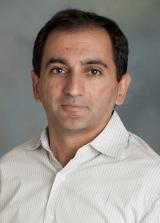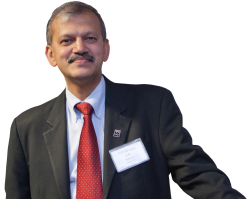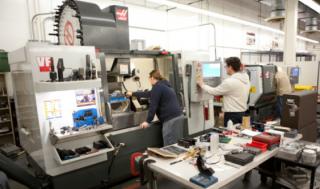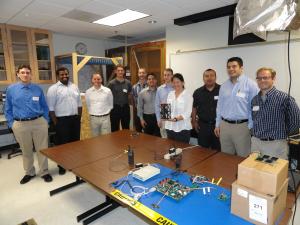Faculty: Smart grid trainer offers a glimpse of our energy future
 It’s a hot, humid summer day, and the spiking demand for air conditioning causes a blackout. With current technology, the power grid will remain down until the problem is fixed. Jump a number of years into the future, however, when the so-called smart grid is fully implemented, and solar panels or wind turbines that have been programmed to operate autonomously will help keep critical loads within a neighborhood or campus alive. Better yet, the whole system will be programmed to redistribute the load and prevent the blackout in the first place.
It’s a hot, humid summer day, and the spiking demand for air conditioning causes a blackout. With current technology, the power grid will remain down until the problem is fixed. Jump a number of years into the future, however, when the so-called smart grid is fully implemented, and solar panels or wind turbines that have been programmed to operate autonomously will help keep critical loads within a neighborhood or campus alive. Better yet, the whole system will be programmed to redistribute the load and prevent the blackout in the first place.
The smart grid uses new technology such as smart meters, controllers and devices that can communicate to optimize power conservation and delivery. It also promotes integration of renewable energy resources and promises to increase the efficiency of today’s system by approximately 9% by 2030, saving more than 400 billion kilowatt-hours each year―an estimated $42 billion in the first year alone.
Because it is the wave of the future, Kourosh Sedghisigarchi, assistant professor of electrical engineering, is eager to establish a smart grid laboratory at CSUN. As a first step, he has been building a smart grid trainer in his lab, courtesy of funding from a campus grant and help from a team of student volunteers. The trainer will work with the existing renewable energy station already installed on the engineering building, which includes four photovoltaic panels and a wind turbine with a total maximum output of 1.6 kW. The output of these devices will be hooked up to the trainer, allowing users to demonstrate various features that the future smart grid will have.
“This is not a simulation but a hardware bench that mimics a small, low-voltage electric power system,” Sedghisigarchi says. “We can hook up data acquisition devices to monitor the voltage and current at every node of system. We can add on real digital protection devices to keep the system safe, reliable and robust. Also, demand control can be remotely accessed via cell phone or any laptop.”
The beauty of the system he adds, is that it can be used for teaching as well as for research. His hope is that students who gain experience with these technologies will find many job opportunities. And he notes, “It will also bring opportunities for industry and utilities to collaborate with us.”
A message from the Dean
February 6, 2014Industry partnerships – HAAS
February 6, 2014Industry Partnerships – Jet Propulsion Laboratory
February 6, 2014
Leave a reply Cancel reply
-
CECS blazes a trail in the quest for STEM diversity
February 20, 2015 -
Alumni Spotlight
February 22, 2011



